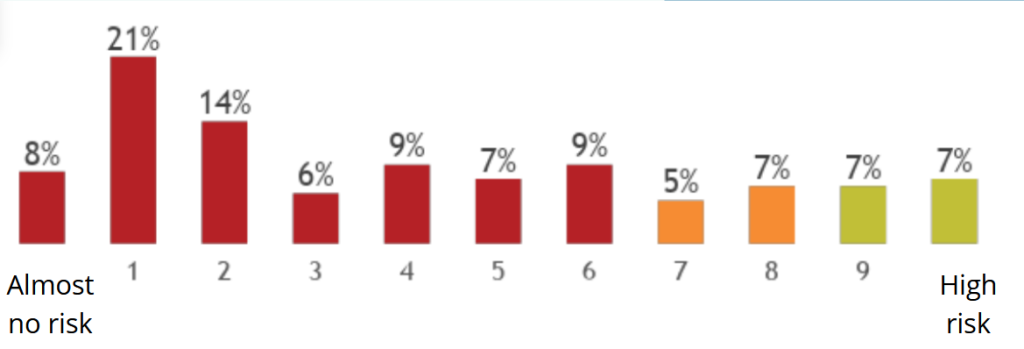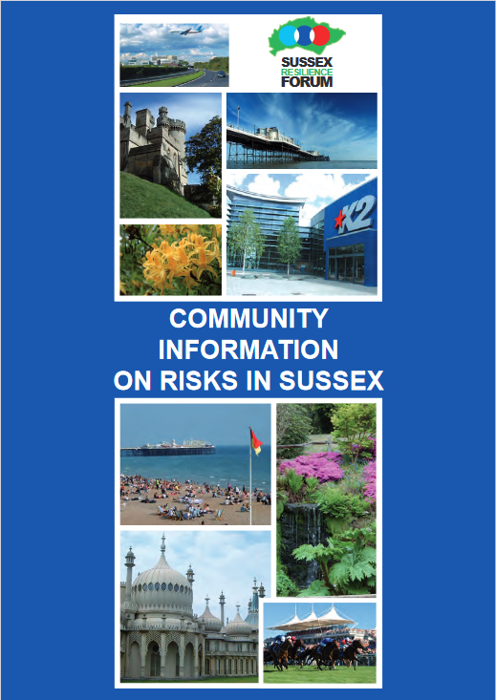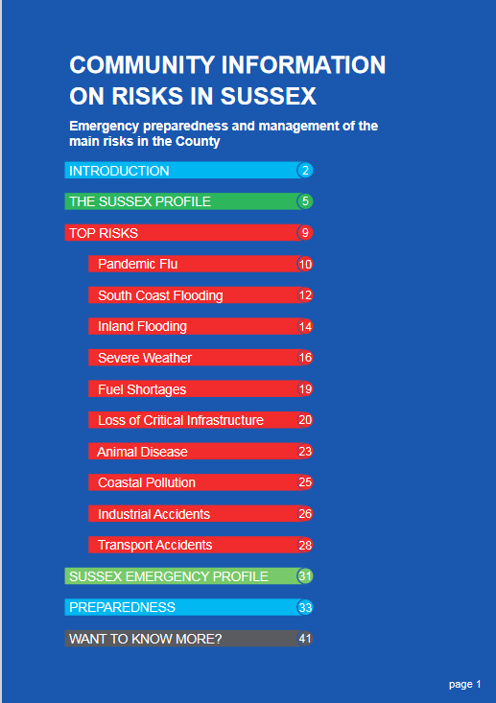1 Communication: an abundance of mediums
Communication in the field of flood Risk management is of crucial importance, not only to inform but also to actively engage the community. Municipalities have a plethora of communication channels to achieve these objectives, each playing a specific role in establishing effective dialogue between local authorities and citizens.
On one hand, traditional channels such as municipal websites and social media serve as essential platforms to disseminate information about ongoing projects, news, and upcoming events. These channels allow residents easy access to information at any time, thereby promoting a better understanding of the ongoing activities.
Moreover, information meetings and participatory workshops provide physical forums where residents can gather in person, discuss projects, ask questions, and express their opinions. These face-to-face meetings foster open and transparent exchange, strengthening the bond between local authorities and citizens.
The distribution of flyers and printed information remains an effective method to reach a broad audience, but word-of-mouth communication and other unofficial means also play a crucial role in information dissemination within the community.
Individual interviews with affected populations enable municipalities to directly listen to residents’ concerns and take into account their specific needs. These personalized interviews can contribute to building trust between local authorities and citizens.However, in the study of eight specific cases, significant disparities in communication approaches emerged. For example, in the case of the River Thames in England, communication channels appear underutilized, highlighting limited communication despite the critical importance of flood-related issues. In contrast, West Sussex takes a proactive approach with a variety of channels, emphasizing the importance of communication for public participation in flood Risk management.
Figure 2: Example in Sussex County, England, source: Sussex country
There is no real public information on flood Risk, even though the information is available on the county’s website. However, it is not tailored to effectively inform the public.
The Belgian cases of Beerse and Geraardsbergen illustrate diverse approaches, ranging from the distribution of brochures and online surveys to personalized awareness meetings. However, participation may vary depending on factors such as the cost of proposed measures.
In Helsinki (Finland), communication focuses on information meetings and citizen participation, although disparities in participation are noted. In Kokemäenjoki (Finland), collaboration among different stakeholders is favored, aiming to engage a wide range of stakeholders.
The French cases of Blois and Ault highlight the importance of communication in mobilizing the local community. However, concerns persist regarding transparency and the effectiveness of communication, underscoring the need for a thoughtful approach.
In summary, the diversity of communication channels used by municipalities aims to ensure a better understanding of flood-related issues and promote active participation from the local community. The case studies illuminate varied approaches, emphasizing the importance of communication strategies tailored to each context to ensure effective flood Risk management and communication.
.
.
Which situation do you think best fits your home, business premises, or land regarding your Risk of flooding?

Response to one of the questions in the questionnaire distributed in the municipality of Beerse in Belgium, aiming to understand the population’s awareness of the Risk. It is clear that the Risk is not understood and not considered by the population, despite communication campaigns to explain the phenomenon of flooding. Document translated from Flemish. source: City of Beerse
2 Between Information Overload and Under-Information
Information in the context of flood Risk management goes beyond its dissemination; it also encompasses the complexities of information overload and under-information. Information overload can occur when the quantity of available information surpasses residents’ capacity to assimilate it, creating saturation that can lead to confusion. On the other hand, under-information happens when residents do not receive enough relevant information to fully understand the issues and contribute actively to Risk management.
Integrating residents’ experiences into communication becomes crucial in this context. Past experiences with floods or measures taken by local authorities influence individual perceptions of Risk and receptivity to provided information. Therefore, communication strategies must consider these experiences to ensure an accurate understanding of the population’s needs and concerns.
Local social and economic dynamics also play a major role in information reception. Socioeconomic inequalities can influence residents’ participation and understanding, creating disparities in access to information and the ability to react to proposed measures. Municipalities must be aware of these dynamics to design inclusive and equitable communication strategies.
In the studied cases, the diversity of communication approaches reveals the importance of tailoring strategies to local realities. For example, where information overload may be an issue, authorities could consider strategies to simplify and prioritize information. Conversely, in contexts of under-information, additional efforts to raise awareness and educate the population may be necessary.
The observed disparities between different regions highlight the influence of cultural, political, and economic factors on how communication is perceived and used. It is essential to recognize that effective communication goes beyond information dissemination; it must also consider individual perceptions, local contexts, and social dynamics to ensure truly participatory and inclusive flood Risk management.
.
.

3 Consideration of Vulnerable Populations
When examining the consideration of vulnerable populations in the eight case studies, it is unfortunately evident that this dimension is often neglected. Vulnerable populations, who are often the most affected by floods and associated risks, should receive special attention in flood Risk management processes. However, this analysis reveals that vulnerable populations are not always adequately considered, whether in communication, planning, or the implementation of flood management measures.
In most cases, public communication and awareness efforts are not tailored to vulnerable populations. Preferred communication channels, such as websites, social media, and public meetings, do not always account for the specific needs of these populations. As a result, crucial information may not effectively reach those who need it the most.
In Blois, the traveler community faces evident discrimination in the context of flood risks. Their nomadic lifestyle and specific needs are often misunderstood, even perceived as a nuisance by local authorities and the sedentary population. This discrimination has led to the exclusion of these communities from decision-making processes related to flood Risk management. It is essential to recognize this discrimination and ensure that communication, participation, and consultation processes consider the needs and concerns of the traveler community. Combating discrimination and stigma against these communities is crucial to ensuring their Inclusion and active participation in the planning and implementation of flood management measures.
Moreover, the participation of vulnerable populations in decision-making is often limited. Information meetings and public consultations may not be accessible or inclusive for these groups, excluding them from the decision-making process. This results in a lack of representativeness and Equity in the planning and implementation of flood management measures.
4 The Involvement of the Population
The involvement of the population is a crucial aspect of flood Risk management as it allows for the gathering of local knowledge, ideas, and concerns that can contribute to more effective and sustainable solutions. However, in our eight case studies, population involvement varies significantly from one case to another.
In some cases, such as Beerse in Belgium, efforts are made to actively involve residents in the co-creation process. Participatory meetings and online surveys are organized, enabling citizens to contribute to planning and decision-making. This creates a sense of positive engagement, where residents feel heard and understood
However, other cases, such as The River Thames in England, show low public participation. Residents have limited opportunities to voice their opinions, and there are no formed citizen groups to have a more significant impact. This exclusion from citizen participation can lead to a lack of crucial information and a lack of engagement from the local community.
Ultimately, it is crucial to recognize the importance of population involvement in flood Risk management. Municipalities and local authorities must adopt inclusive approaches tailored to vulnerable populations and ensure that citizens are actively engaged in decision-making to ensure more effective and equitable solutions to flood risks.
The issue of Risk knowledge plays a significant role in population participation in flood Risk management. It is essential for residents to understand the potential consequences of Climate change on their habitats and communities to be fully engaged in the decision-making process. However, it is common for Risk understanding to be uneven, influencing participation in different ways.
When populations lack information about flood risks and the implications of Climate change, they may be less inclined to actively engage in Risk management processes. This knowledge gap can result from various factors, including a lack of awareness, education, or effective communication from local authorities. Residents may not perceive the threat tangibly or realistically, leading to a lack of engagement.
When populations are better informed about risks and their consequences, they are more likely to actively participate in decision-making, voice their concerns, and express their needs. Risk knowledge can also strengthen populations’ ability to contribute constructively to discussions on flood Risk management measures and advocate for more equitable and sustainable approaches. Ultimately, awareness and understanding of risks are essential elements to encourage population participation in flood Risk management and enhance community Resilience to Climate change.
5 Overcoming Reluctance to Action and Mobilizing the Power of Residents
The mobilization of populations in the face of flood risks is often complex. Reluctance to take action can result from various factors, such as a lack of understanding, the minimization of perceived risks, or even a sense of helplessness in the face of natural and complex phenomena.
Once residents overcome the fear of action and understand the impact of their involvement, they can exert significant power. Community initiatives, local associations, and citizen movements can not only challenge public authorities’ decisions but also positively influence flood Risk management Policies. The power of residents lies in their ability to take ownership of resources and act collectively to prevent floods and mitigate their consequences.
Want to go further?
- Flood Risk Management: a wide variety of stakeholders
- 1. National Institutions: Guardians of security
- 2. Local Institutions: Stakeholder on the ground
- 3. European Union: Coordinator of Transboundary Initiatives
- 4. Inhabitants: Multidimensional Role
- 5. Rescue Services: First Responders in Crisis
- 6. Private Groups: Civil Society stakeholder
- 7. Decisions, Implementation, and Consultations
- The Necessity of Communication Adaptation
- Explanations for the Lack of Consideration for Social justiceCONCLUSION







